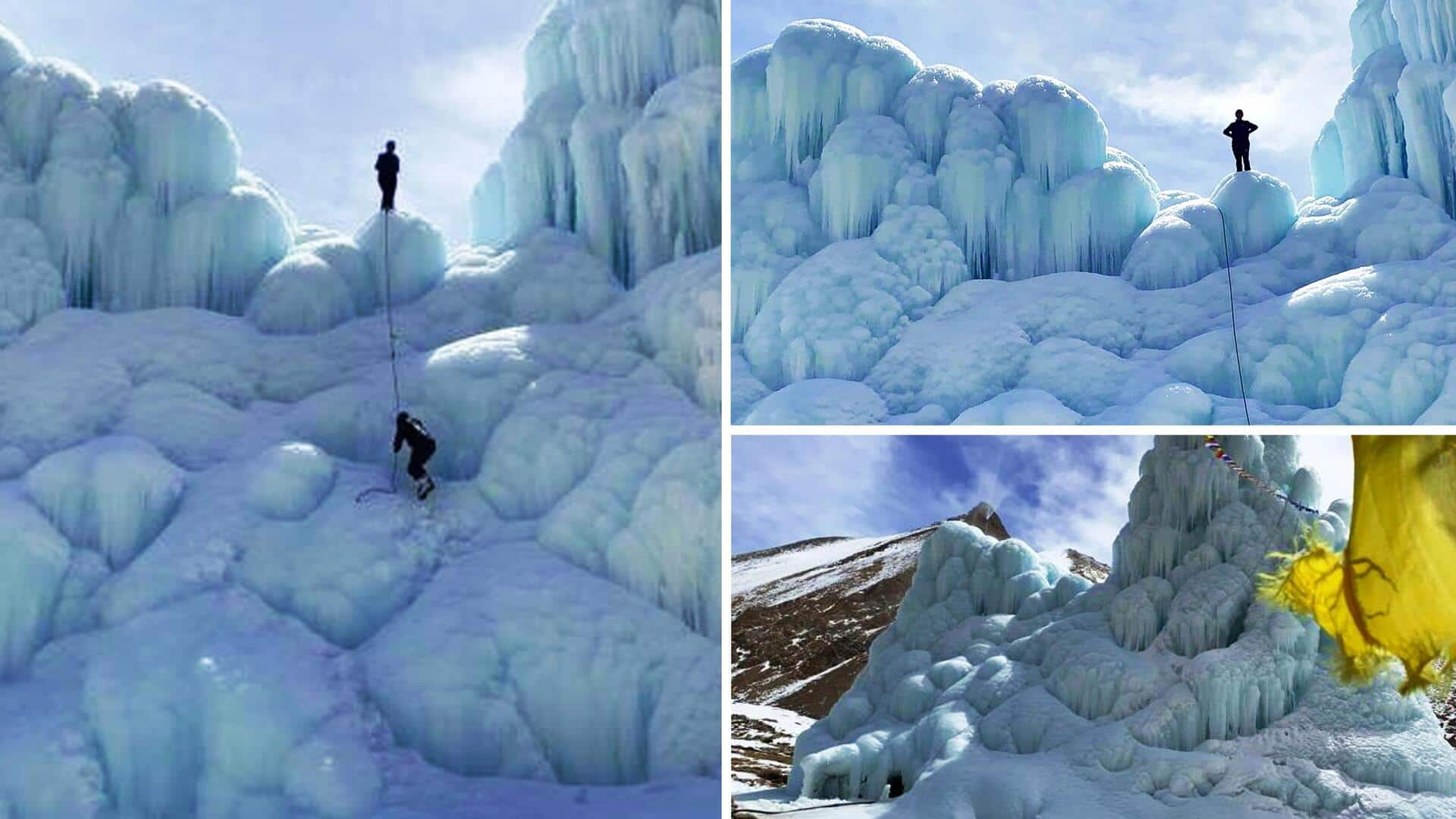
Ladakh's daring answer to climate chaos captivates the world
What's the story
On a fateful night in Ladakh on August 5, 2010, an unexpected deluge shattered the region's calm, defying its historical shelter from the towering Greater Himalayas' monsoons. With escalating floods due to climate change, the community faced intensified hardships. Engineer Sonam Wangchuk arose amidst this crisis, devising a nature-inspired solution—towering ice stupas—as a beacon against impending water scarcity, offering hope to the struggling populace.
Climate change
Solving the puzzle of changing climate
Once a region of predictable water rhythms, Ladakh now grapples with the impact of climate change, with rising temperatures and erratic snowfall disrupting the delicate balance that sustained its ecosystem for centuries. The devastating floods of recent years herald a new reality, prompting the local community to seek inventive solutions to secure their water supply.
Ice cone
Visionary engineer and the ice cone
In the face of environmental upheaval, engineer Sonam Wangchuk envisioned a solution rooted in mathematics and pragmatism. Inspired by the simple geometry of a cone, Wangchuk initiated a project to build towering ice structures that could harness winter water and release it gradually during the arid spring, providing a sustainable source for agriculture and livelihoods.
Solution
From concept to reality
Wangchuk's vision materialized as the "ice stupas," structures created by spraying water into sub-zero temperatures, forming towering cones of ice. The engineering feat not only addressed the immediate water crisis but also aimed to raise global awareness about the urgency of climate action. The project reflects a blend of traditional wisdom, scientific innovation, and community engagement.
Process
How do ice stupas work
The idea involved redirecting mountain stream water through a vertical pipe with a fine nozzle, turning the spray into a frozen cone in frigid -30°C temperatures. This ingenious approach aimed to optimize the ice's surface area exposed to sunlight, offering a promising strategy for addressing environmental challenges.
Prototype
Prototype success
In the winter of 2013-2014 a prototype was erected to test ideas. Positioned in the warmest area of Leh Valley, the seven-meter ice stupa, supplied by a 15-meter-high campus pipe, aimed to demonstrate viability in Ladakh. By May 1, at three meters, it provided water, confirming longevity. Eventually melting on May 18, it showcased that larger masses at higher altitudes could last much longer.
Water
Battling water scarcity and climate change
In Ladakh, water scarcity extends beyond agriculture due to the region's scanty 100mm annual rain/snowfall. Pashmina goat herders and farmers are abandoning their traditional occupations, migrating in search of alternative livelihoods, due to water scarcity in summer. The ice stupas represent a beacon of hope, demonstrating how localized, community-driven initiatives can mitigate the impact of climate change and inspire a shift in global behavior.
Ice stupas
Ice stupas: A symbol of change
Wangchuk's perspective extends beyond the practicality of ice stupas; he envisions them as symbols catalyzing behavioral change. He believes that these structures serve not only to provide water but also to sensitize the world about the imperative need for sustainable practices. Ladakh's struggle resonates with a broader call for collective action against climate change, uniting India, China, and Pakistan in a common cause.
Threat
Uniting against a global threat
This innovative idea can help villagers conserve about 75 lakh liters of water during winters, according to the Ministry of Tribal Affairs, GOI. Beyond national borders, the climate change crisis threatens river basins and densely populated regions. The imperative to join forces in fortifying resilience against this existential threat becomes increasingly evident, urging nations to transcend geopolitical boundaries for the preservation of humanity.